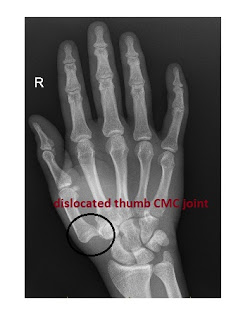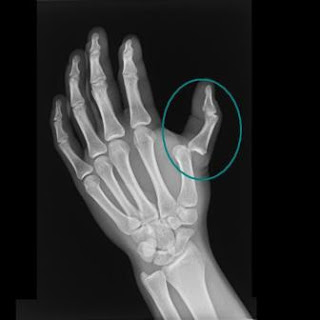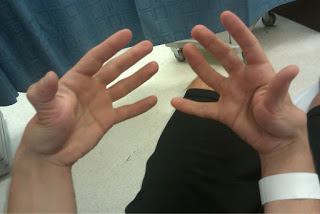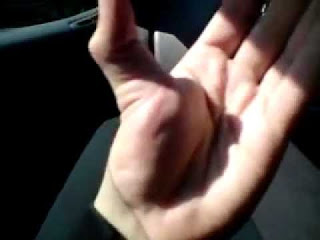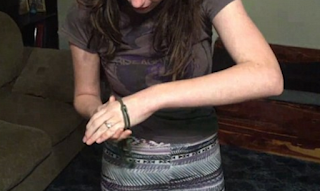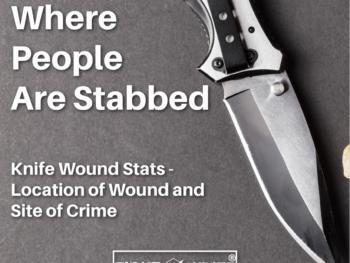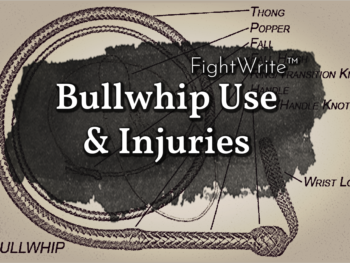Is dislocating a thumb to escape handcuffs a “thing?” Recently, at a writer’s conference, I was on a panel called “Blood and Guts” and was asked that very thing.
One writer asked if we thought it was possible to dislocate your thumb to escape handcuffs. I said I didn’t believe so and asked a few police officers after the fact. They agreed, probably not. However, they did say women escape cuffs more often. If it was because they were dislocating their thumbs, they couldn’t say for sure. But, they kinda doubted it. More likely they escape because officers are required to leave a bit of room between the handcuffs and the wrist, enough to be able to slip a finger between the two. All the women folded their hands together vertically – pinkie to thumb. And, in every case, the thumb joint required a bit of pulling to pass.
How Women Fight How Women Kill How Women Get Away with Killing Escaping Zip Ties
We are going to consider this question from a hands cuffed in front of the body perspective. Can you dislocate the thumb to escape? First, which joint are we even talking about?
According to Andrew Winch, a physical therapist specializing in sports medicine, it’s not the joint we commonly think of that causes the issue. The CMC joint at the wrist is what stops the cuff. According to PT Winch:
The 1st CMC actually controls where the 1st metacarpal (the next joint up), and thus the 1st MCP, moves in space. As the 1st metacarpal rolls over the socket created by the carpal bones (at the CMC joint), the 1st metacarpal rolls forward and brings the 1st MCP with it. So, in theory, dislocating the 1st CMC would, in theory, shift the whole 1st metacarpal out of place. So yes, the CMC is what would need to be dislocated to get the metacarpal out of the way, which is required to slip out of a properly tightened set of cuffs (which get caught first on the head of the 1st metacarpal at the 1st CMC).
He continued:
…the first CMC is a saddle joint, so the only real way to traumatically dislocate it is to break one of the bony components of the saddle (or pull the thumb so far straight out that you distract the joint past those ridges, thus ripping every ligament in the joint).
Even if it were the next joint up, the MCP joint, that held the cuffs at bay, dislocating it wouldn’t be much help either.
As you can see, and according to Winch as well, the thickness of the hand isn’t changed much. And, even if did make the hand thinner, once you got the cuff up over the dislocated joint, the rest of the thumb would pose a problem. Here’s why:
Thumbs are meaty.
So, in my opinion and, more importantly, PT Winch’s professional opinion, dislocating the thumb to remove handcuffs is not USUALLY a “thing.” Might it happen? Yes, if you have dislocated the joint in the past so the ligaments are compromised and loose enough that you can dislocate it at will and you don’t have thick palms. Another PT friend of mine dislocated his thumb badly years ago and can dislocate it at will to this day without using the other hand. He can just bend his thumb a certain way and it pops out.
Previous injury aside, if your character has Ehlers-Danlos syndrome, which affects the connective tissue, they might be able to escape. If that character is cuffed behind their back, escape might look like this:
Unfortunately, it is common for folks with Ehler-Danlos Syndrome to also have other health issues. So, even if they escape the handcuffs, a speedy getaway on foot might be an issue.
TOTALLY UPDATED INFO!!!!
This was sent to me by fightwriter Hanah. I LOVE when you all send me more info. My favorite knowledge is the kind I don’t have yet.
Here is what she wrote: While someone with EDS might have trouble escaping after getting out of the cuffs, that’s going to be due to a drop in blood pressure on standing up (POTS), lack of coordination (EDS causes problems with proprioception and a lot of us are clumsy), pain from loose joints, or most likely other dislocations. Most people who can dislocate on command are also vulnerable to dislocating when they DON’T want to as well.
To really get out of handcuffs, check back next week! Until then, that’s it for this round at FightWrite.net. Get blood on your pages.
BEFORE YOU GO – check out the blog index for more cool FightWrite topics!
One more thing…BUY THESE BOOKS! They’re chocked full of cool stuff!


